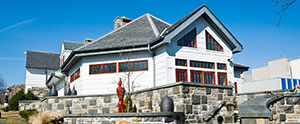Committee on Committees
Committee Guide Addendum
I. Communication with Faculty
Emails that need to be sent to all faculty members can be sent from the Committee on Committees email address. Simply type in QCC Faculty. As of the 2024-2025 academic year, QCC Faculty does not include the email addresses of CLIP or CUNYStart, or HEOs or CLTs, or adjuncts, groups included in the "instructional staff" eligible to serve on most committees. (Adjuncts, in particular, have not been solicited for service in recent years, though the CoC has received no complaints.)II. Timeline
At the start of the Fall Academic Year, the Committee on Committees (CoC) should receive its charges from the Steering Committee. The chair may want to schedule a meeting in September to discuss with the full CoC membership how best to accomplish those charges within the academic year.
The chair should assign each CoC member 2-3 committees on which to serve as liaison. This liaison member will need to be in contact with the chairs/secretaries of those committees and advise the committees to be certain their websites are up to date with the following: 1) accurate list of members with terms; 2) set meeting time and dates; and 3) agendas, minutes, and guide addendum posted. The liaison will also want to emphasize that the chair and/or secretary should notify them if any vacancies occur on their committee so that the CoC may fill those vacancies in a timely manner. Appointments to such vacancies should be reported to the Steering Committee in a CoC monthly report for presentation to the Senate.
For all of what follows, please keep in mind the definitions of faculty and instructional staff:
- Faculty: full-time professorial titles, lecturers, instructors (assigned to academic departments; does not include CLIP and CUNYStart), and CLTs. (Note that "registrar series" is no longer in use at QCC; registrar office staff are HEOs.)
- Instructional staff: full-time and part-time professorial titles, lecturers, instructors (including CLIP and CUNYStart), CLTs, and HEOs. (Same note regarding registrar series.)
In mid-January, perhaps a week after the start of the semester, send an email to all instructional staff (540 people in 2025, though adjuncts were omitted) asking them to think about serving on academic senate committees. (Prior to 2025, this instruction said to send only to faculty.) The CoC email address has the permissions necessary to email all faculty (which excludes CLIP and CUNYStart), but a list of faculty plus CLIP, CUNYStart, HEOs, and CLTs can be obtained from IT (Rajesh Vaswani) who ultimately gets it from HR (Lisa Scandaliato in 2025). Emailing a group this large is not easily accomplished from Outlook, which has a limit of 500 recipients per message. Either multiple contact groups can be generated from the list, each composed of less than 500 members, or the email can be sent by Adam Volin in Marketing (as Dave Moretti used to do).
In late-January, the chair and/or the full committee should meet with Rajesh Vaswani with the Office of Information Technology to generate the list of people who should receive committee volunteer preference links. (The list will be provided to Adam Volin in Marketing who sets up the form and will send the message- see below.) The preference link email should go to all eligible instructional staff who are not currently on a committee, and all faculty/staff whose three-year term is ending, to give them an opportunity to volunteer for another committee. Caution: as of 2025, there were 4 committees (AIE, eLEarning, Food Insecurity, WIDWAC) specified in the Bylaws whose members are to be drawn from faculty, not instructional staff. The Bylaws for three of those committees (AIE, eLearning, WIDWAC) specify that members must come from different departments and for two of them (eLearning, WIDWAC), that members must have training in the area of specialty of the committee.
Each committee has membership numbers that are divisible by three. Some committees have nine members, and some six. Each year, one third of the members of any committee will have three-year terms that are expiring. This should be confirmed and any errors corrected by the CoC during the election period.
Raj will give the CoC a list of all people eligible to vote in the Senate committee elections, and the CoC will need to remove members continuing on committees (6 members continuing for most committees; 3 for some). Thus, the list will then be composed of instructional staff not on a committee and those whose terms on committees are ending. In 2025, the list from Lisa/Raj was broken down by title- HEO, CLT, and faculty. CLIP and CUNYStart were not listed, as in other recent years. They were added before the call for volunteers was sent, and did not require a separate email as in past years. However it's accomplished, CUNYStart and CLIP instructors should be included.) The CoC may also want to develop a form for those faculty members to complete to explain their reasons for wanting to serve another 3-year term on the same committee. Make sure that each committee gets one third new members (some of whom may be old members allowed to serve another three-year term under extraordinary circumstances- use the form discussed above to ascertain why they need to stay).
During the first or second week of February, the preference link will be sent to the list of instructional staff (FT and PT faculty, CLT, HEO, CUNYStart, & CLIP) by Marketing (Adam Volin) using either the chair of the CoC's email address or the CoC email address.
Mid-February, preferably the third week, the CoC should meet to make suggestions for the standing committees based on responses to the preference form provided by Marketing in an Excel file. In the past, the chair alone has done this work, but the CoC may want to figure a way that all 9 committee members can assist. (In 2025, this was accomplished at a committee meeting.) This nomination process should be completed at least 4 weeks before the April Senate meeting because the Ballot of Nominees must be sent to all faculty members by the CoC two weeks before the April meeting, per Senate Bylaws. If there are more volunteers than positions available, a list of alternates should be maintained so that future vacancies can easily be filled. Once all vacancies have been tentatively filled, confirm via email that nominees to the WID-WAC committee are WI trained and that nominees can attend the posted meeting time of their committee.
Two weeks before the April Senate meeting, send the final ballot to the Secretary of the Steering Committee and to all instructional staff. Be sure to check for accuracy: spelling of names, titles, departments, and so on. Be sure the final ballot is emailed to everyone who received the preference link.
After the Senate has met and approved the ballot at its April meeting, emails should be sent to all members on standing committees who terms have expired thanking them for their service and welcome emails should be sent to all incoming members. Templates for both of these emails are available on the CoC documents webpage under Templates.
In early March, the CoC should work with the Steering Committee of the Academic Senate to prepare for the Academic Senate (not committee) elections. As of 2025, the CoC took this election back from the Steering Committee. The CoC must check the Academic Senate roster page to determine how many terms and from which titles are expiring in April. There can be no more than 4 Faculty Members at Large (FMAL) plus the Chair from any one department. For the FMAL election, the list includes only FT faculty and may include CLTs and HEOs separately for their guaranteed positions.
After the elections for FMAL has concluded, emails should be sent out to incoming senators congratulating them on their election to the Academic Senate and notifying them to access the Senate webpage and attend the upcoming Senate meeting. A template for this email is available on the CoC documents webpage under Templates.
After the April Senate meeting, nominations for the next three-year terms of the CoC need to be solicited. Only 1 member per department is allowed on the CoC, so nominations for incoming members must be from members whose departments are not already represented. The chair of the member’s department should nominate them during the May Senate meeting in which the FMAL will vote. Prepare a Monthly Report for the May Senate meeting that includes the results of the Senate elections, and the rosters for all committees.
Early May, thank you notes should be sent to the outgoing members of all Committees using the CoC email account. A template for this email is available on the CoC documents webpage under Templates.
The final CoC meeting of the academic year should be conducted in May after the new CoC members have been elected. This meeting will include both those members whose terms are expiring as well as the newly appointed members. At this meeting, elections for the chair and secretary of the CoC for the next academic year should be held. Those members whose terms are expiring may not vote for the new chair/secretary.
Once the new CoC roster has been established, all members should be given access to the CoC email address (academicsenatecommitteeoncommittees@qcc.cuny.edu) by submitting a QCC Email Service Desk request.
III. Duties of Chair and Secretary
A. The Chair should do the following:- Set agendas and schedule meetings
- Write monthly reports detailing any significant actions of the CoC
- Keep a record of CoC members who have gone above and beyond
- Keep a record of CoC members who are inactive (e.g. do not attend meetings and/or do not actively participate in CoC business)
- Upload Agendas, Monthly Reports, and the Annual Report to Cascade
- Attend the Academic Senate Meetings each month
- Update central committee rosters page on Cascade when there are any changes in any committee membership
B. The Secretary should do the following:
- Assist the Chair
- Take Minutes for all CoC meetings
- Upload Minutes for all CoC meetings to Cascade
- Update central committee rosters page on Cascade when there are any changes in any committee membership
IV. Accessing Cascade
The Chair and Secretary should contact the Chair of the Academic Senate and Marketing to gain access to Cascade (the entire Senate site). Additionally, the Chair and Secretary should set up a meeting with the Senate Chair and/or watch the tutorial videos on using Cascade which can be found on the Steering Committee page.



